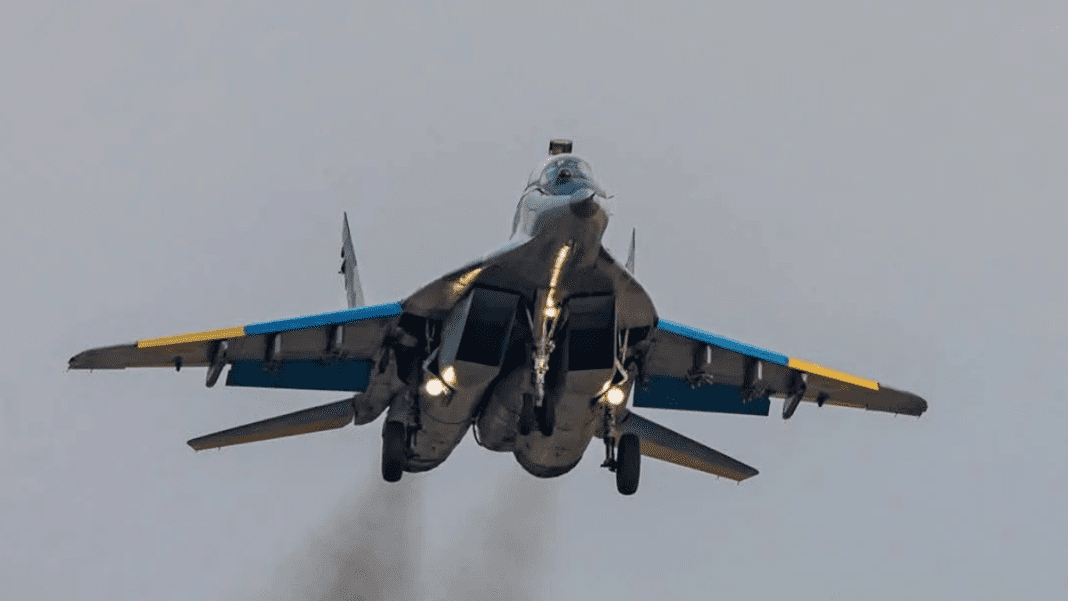Ukraine faced another heavy night of danger as enemy forces launched a large mix of missiles, including a Kinzhal missile, and drones across the country. The attack began late Saturday and continued well into the morning of November 15. Air raid alerts sounded across several regions as people rushed to safe places while air defense teams took action.
Air Force Downs 2 Missiles and 91 UAVs in Intense Night Strike
The Ukrainian Air Force confirmed that the enemy fired three Kinzhal missiles and sent 135 strike drones toward cities and key infrastructure. These drones included Shahed, Gerbera, and several other types designed to cause destruction or distract defenses.
Despite the size of the attack, the Defense Forces responded quickly. By 09:00, air defense systems had shot down or suppressed two out of the three Kinzhal missiles. They also intercepted 91 out of the 135 drones, stopping many of them before they reached their targets. This meant the night’s defensive success rate was over 67%, a strong achievement considering the number of incoming threats.
Still, the attack caused damage. One Kinzhal missile and 41 drones managed to hit 13 locations across the country. Four other areas reported falling debris from drones that had been destroyed in the air. Emergency teams moved into these locations to check for fires, damaged buildings, and risks to residents.
Even by the morning update, the attack had not fully ended. Several enemy UAVs were still in the sky, and air defense groups continued to work to remove them.
How the Defense Forces Countered the Kinzhal Missile and Drone Swarm
The overnight operation involved several coordinated units. Aviation teams watched the skies, missile troops targeted incoming weapons, electronic warfare units tried to disrupt enemy systems, and mobile fire groups responded from the ground.
The Kinzhal missile was one of the biggest challenges of the night. Because it travels at extremely high speeds, it is one of the hardest weapons to stop. Even so, air defense forces managed to intercept two of the three Kinzhal missiles, preventing greater destruction.
The drone swarm also created serious pressure. Many of the 135 drones flew in groups to overwhelm defenses. Some carried explosives, while others were used for distraction or scouting. Air defense units intercepted 91 drones, showing strong coordination across all branches.
Zelensky unveils new sanctions plan to choke off foreign tech fueling Russia’s missiles and drones
However, 41 drones and one Kinzhal missile still hit 13 locations, causing damage. Emergency teams checked for fires, structural damage, and risks to residents. Debris also fell in four areas, adding more dangers.
This attack came only a day after a slightly smaller assault. On November 14, enemy forces launched 449 missiles and drones, with 419 intercepted, but hits were again recorded at 13 sites.
There were even larger attacks earlier in the year. On September 7, 818 drones and missiles were launched, and 751 were intercepted, yet 37 locations were struck. On July 9, defense forces achieved one of their highest success rates by intercepting 718 out of 729 threats. These events show how the scale and style of attacks change, but the pressure on air defenses remains extremely high.
Comparing the Latest Strike to Past Kinzhal Missile Attacks
Saturday night’s attack added to the growing list of intense assaults involving drones and missiles, including the Kinzhal missile, which has been used in several major operations this year. Each time it appears, the Air Force faces one of the fastest and most advanced weapons in the enemy’s arsenal.
In this most recent incident, the Kinzhal missile again played a central role in the threat. Intercepting two of the three Kinzhal missiles showed that defense systems were able to respond to this high-speed danger, even during a massive drone swarm.
At the same time, the number of drones—135 in a single night—made interception even harder. While defense teams stopped 91 drones, 41 still reached their targets, leading to hits at 13 different locations. This combination of drones and Kinzhal missile technology has appeared in several earlier attacks, showing how these weapons are often used together.
⚔️ Hypersonic Horror: Kremlin’s 695 Kinzhal Missiles Could Cripple Europe’s Defenses in Minutes
The previous night’s attack, as well as the large-scale assault on September 7, also involved waves of drones and missiles launched in different directions to confuse defenses. These examples help illustrate how quickly the situation can shift from calm to extremely dangerous.
During Saturday night’s strike, several unmanned aerial vehicles were still flying even after 09:00. Air defense teams continued to track them and prevent them from causing further harm. The events highlighted once again how every attack—especially one involving a Kinzhal missile—requires fast reactions, teamwork, and strong coordination across all branches of the Defense Forces.
The night was difficult, but the actions of the Air Force and supporting units prevented even greater destruction by stopping a majority of the incoming weapons.
